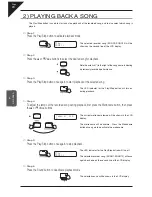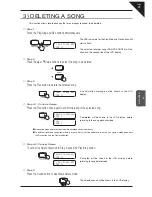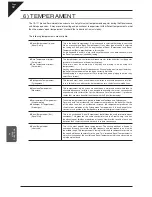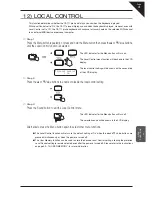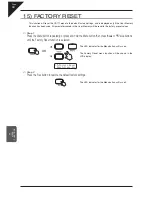
Page
34
7
MENU
FUNCTIONS
7) KEY OF TEMPERAMENT
Limitless modulation of the key only became available after the invention of Equal Temperament. When using
a temperament other than Equal Temperament, care must be taken to choose the correct key signature. For
example, if the song to be played is written in D major, ‘D’ would be chosen as the temperament key. The Key of
Temperament function allows the desired key signature for the selected temperament to be selected. Please note
that the Key of Temperament function will not be available if Equal Temperament is selected.
Step 1
Press the Menu button repeatedly, or press and hold the Menu button then press the
S
or
T
Value buttons,
until the Key of Temperament function is selected.
The LED indicator for the Menu button will turn on.
The Key of Temperament menu function will be shown in
the LCD display.
The key of temperament will be shown on the second line
of the LCD display.
Step 2
Press the
S
or
T
Value buttons to select the desired key of temperament setting.
¡
The key of temperament can be set between the range of ‘C’ to ‘B’.
Step 3
Play the piano.
The key of temperament selected in Step 2 will be utilised
for the sound.
Step 4
Press the Sound button to exit the Key of Temperament menu.
The LED indicator for the Menu button will turn off.
The selected sound will be shown in the LCD display.
Alternatively, press the Menu button again to select other menu functions.
The Key of Temperament function cannot be altered when Equal Temperament is selected.
The Key of Temperament function will return to the default setting of ‘C’ when the
S
and
T
Value buttons are pressed
simultaneously, or when the power is turned off.
The User Memory function can be used to store the desired Key of Temperament setting, allowing the preferred Key of
Temperament setting to remain selected even after the power is turned off. Please refer to the instructions on page 43
- 14) USER MEMORY - for more information.
OR
7.Key
of
Temper
=
C
CA111̲EN.indd 34
2008/04/12 0:58:57

